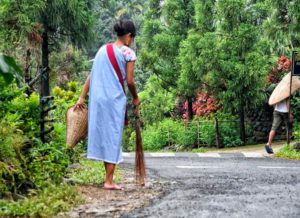The cost of manufacturing a one-rupee coin in India has been the subject of public interest and angst, especially due to — shocking as it might sound — its cost usually running higher than the face value of the coin. An inside story of what it takes to create a Rs. 1 coin, what influences its cost, and the broader economic context follows:
1. What Does It Cost to Make a One Rupee Coin?
Based on the most recent available figures from the Reserve Bank of India (RBI) and the Security Printing and Minting Corporation of India (SPMCIL), the production cost of one Rs.1 coin is between ₹1.11 and Rs.1.28. The cost is not fixed and varies with changing raw material prices and operating overheads.
2. Cost Over Time:
• 2018 Estimate: About Rs. 1.11 per coin.
•(2024-2025): The cost has increased to between Rs. 1.11 and Rs. 1.28 per coin, mainly because of metal price increases and other inputs.
3. What Materials Are Used in a One Rupee Coin?
Producing a Rs 1 coin entails the utilization of stainless steel (ferritic grade), which is mainly made up of:
•Iron: 83–84%
•Chromium: 11%
•Nickel: 4–5%
Earlier alignments occasionally included bronze and aluminum alloys. Stainless steel usage was adopted due to its hardness, corrosion resistance, and cost-effectiveness in relation to other metals.
4. How Is a One Rupee Coin Manufactured?
Production of a Rs 1 coin goes through the following crucial steps:
•Raw Material Selection: Purchase of the raw metals according to desired composition.
•Blank Preparation: Slicing the metals into circular blanks of standard dimensions.
•Annealing and Cleaning: Thermal treatment to harden the metal and cleaning for surface finish.
•Coining/Stamping: Printing official designs and anti-counterfeiting information.
•Quality Check and Packaging: Maintaining uniformity, weight, and integrity prior to distribution.
5. Factors Affecting the Cost of One Rupee Coin Production
Manufacturing cost of a Rs 1 coin is influenced by several factors:
•Raw Material Price Fluctuations: As prices in the world market of iron, nickel, and chromium fluctuate, so does the cost of producing the coin.
•Labor and Energy Expenses: The operations of the mints, maintenance of machinery, and payment of wages to employees are major contributors to total expenses.
•Security and Minting Technology: Upgraded machinery and anti-counterfeiting measures raise capital and operating expenditures.
6. Economic Impact of One Rupee Coin Production
•Production Losses: As the cost exceeds the face value, the government makes a loss on each Rs 1 coin produced. This is viewed as a tolerable loss to ensure sufficient physical currency supply in circulation, particularly for lower denominations used in day-to-day transactions.
•Policy Debates: There are debates regarding whether it is acceptable to mint low-denomination coins at a loss, particularly with increasing digital payments and decreasing inflation reducing the purchasing power of the Rs 1 coin.
7. Minting Locations and Production Scale
•Minting Locations: Large minting operations are located in Mumbai, Hyderabad, Kolkata, and Noida.
• Production Scale: Hundreds of millions of Rs 1 coins are produced every year, though the precise figure varies year by year depending on demand, budget planning, and availability of materials.
8. Cost Comparison: One Rupee Coin vs Other Denominations
Denomination Approximate Minting Cost (Rs) Notes
Rs1 1.11 – 1.28 Cost higher than face value
Rs2 1.28 Slightly higher than face value
Rs5 3.69 Significantly higher
Rs10 5.54 High premium over face value
9. Indian One Rupee Coin Sizes and Weights
Diameter: 21.93 to 25 mm
Weight: 3.09 to 4.85 grams
Older coins (1950-1954) were heavier (10-11 grams) and made of nickel.
10. History and Design Evolution of the One Rupee Coin
Obverse of an 1884 Indian 1 Rupee coin featuring the crowned bust of Queen Victoria Empress
A complete year-wise photo catalog of all one rupee (ek rupya) coins from India is not present in a single source, but here is a curated visual and historical lineup that highlights key designs and changes across major years, using images provided:
Pre-Independence (British India)
- 1884: Features the bust of Queen Victoria on obverse, “ONE RUPEE INDIA 1884” in ornate script on reverse.
Indian 1-rupee coin from 1905, showing obverse (King Edward VII) and reverse (‘ONE RUPEE INDIA’, crown, floral designs)
- 1905: Shows King Edward VII on obverse, crown and denomination on reverse.
Both sides of a 1918 Indian 1-rupee coin: King George V’s crowned bust on the obverse; “ONE RUPEE INDIA 1918,” floral wreath, and crown on the reverse
- 1918: King George V on obverse, floral wreath and denomination on reverse.
Indian 1-rupee coin from 1940 featuring King George VI and “GEORGE VI KING EMPEROR”
- 1940: King George VI on obverse, “ONE RUPEE INDIA 1940” surrounded by floral design.
Reverse side of a 1947 Indian 1-rupee coin showing a tiger, “INDIA”, “ONE RUPEE”, and “Ek rupaya” in Devanagari and Urdu scripts
Transition to Republic
- 1947: Tiger walking left, denomination in English, Devanagari (एक रुपया), and Urdu (ایک روپیہ) scripts.
Obverse of a 1947-1950 Indian one rupee coin depicting King George VI and inscribed “GEORGE VI KING EMPEROR”
- 1947–1950: King George VI on obverse (final British-era design).
1954 Indian 1 rupee coin (obverse): Ashoka Lion Capital, five-pointed star, and “GOVERNMENT OF INDIA”
Post-Independence (Republic of India)
- 1954: Ashoka Lion Capital, “GOVERNMENT OF INDIA”.
Later decades featured continued changes:
- 1950s–1970s: Same Ashoka pillar motif, different metals (nickel, cupro-nickel, etc.), diameter and weight varied slightly.
- 1980s: Introduction of new stainless steel coins, commemorative designs (e.g., Youth Year 1985, Small Farmers 1987).
- 2000s:
- Unity in Diversity series (2005–06): Smaller, stainless steel.
- Nritya Mudra series (2007–2011): Ferritic stainless steel, motifs inspired by classical Indian dance.
- Rupee Symbol series (2011–2019): Introduced the ₹ symbol, weight and size reduced.
- Visually Impaired Friendly (2019–): Tactile changes, further reduced size and weight.















Be First to Comment